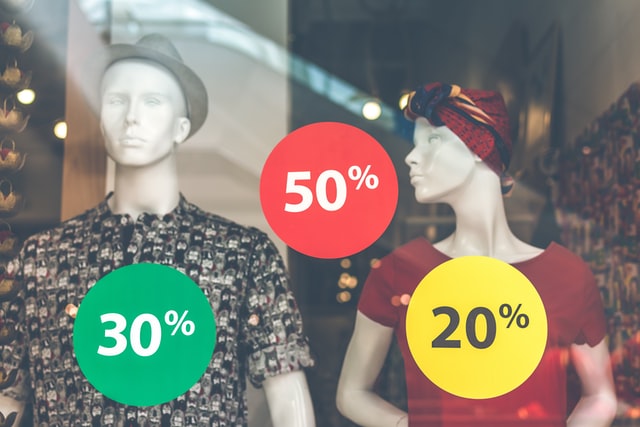Poilsio drabužių populiarumas parodė, koks svarbus dabartiniams klientams yra patogumas ir stilius. Individualiai pritaikytos pižamos tapo geriausiu drabužių didmenininkų ir perpardavėjų, siekiančių paįvairinti savo prekių katalogus, pasirinkimu, nes vis daugiau žmonių dirba iš namų arba tiesiog ieško laisvalaikio patogiuose drabužiuose. Tačiau bet kurios miego drabužių linijos sėkmė paprastai priklauso nuo naudojamų medžiagų; nepakanka pateikti tik įvairių formų ir spalvų pižamų.
Pasirinkus tinkamas medžiagas pižamoms pagal užsakymą, gali būti skirtumas tarp praeinančios mados ir patikimo pajamų šaltinio. Nesvarbu, ar pižamos perkamos darbuotojų sveikatingumo kampanijoms, įmonių dovanoms, ar nuosavoms mažmeninės prekybos linijoms, įmonės ar parduotuvės, kurios renkasi pirkti dideliais kiekiais, paprastai ieško ilgaamžės kokybės. Medžiagų pasirinkimas daro didelę įtaką patogumui, patvarumui, tvarumui ir bendram prekės ženklo įspūdžiui.

Šiame vadove bus pateiktos geriausios medžiagos, iš kurių gaminamos įvairias rinkas tenkinančios pižamos, atsižvelgiant tiek į funkcinius, tiek į estetinius aspektus. Aptarsime kelių audinių privalumus ir trūkumus - nuo prabangaus šilko iki kvėpuojančios medvilnės. Iki šios išsamios apžvalgos pabaigos būsite pasirengę priimti strateginius sprendimus renkantis arba siūlant audinius - galiausiai tai padės jums užsitikrinti daugiau užklausų, nuolatinių klientų ir glaudesnius santykius B2B drabužių rinkoje.
Kodėl pasirinktinėms pižamoms svarbi medžiagų atranka
Vartotojų patogumas ir pasitenkinimas
Miegamojo drabužio patogumas visada yra svarbiausia. Šilumą sulaikanti tekstilė arba braižančios siūlės gali atgrasyti nuo pakartotinio pirkimo. Patogumas, kalbant apie nestandartines pižamas, yra prekės ženklo vientisumo įrodymas, rodantis rūpestį galutinio naudotojo kasdieniu gyvenimu. Jūsų klientai gerokai dažniau grįš pakartotinai užsisakyti ar įsigyti daugiau produktų linijų, kai sužinos, kad jų darbuotojams ar vartotojams patinka pižamos pojūtis.
Unikali diferenciacija ir prekės ženklo įvaizdis
Apibrėžti prekės ženklo kokybę labai padeda audiniai. Aukščiausios kokybės audiniai, pavyzdžiui, bambuko ar šilko pižamos, suteikia jūsų linijai aukštesnį lygį ir gali sukurti prabangesnį įvaizdį. Biudžeto besilaikantys vartotojai gali įsigyti nebrangių medvilnės mišinių ar sintetinių medžiagų, nenusileisdami stiliui. Audinių pasirinkimo įvairovė padeda platintojams patenkinti kelis biudžetus ir padidinti prekės ženklo lankstumą.
Tvarumas ir įmonių atsakomybė
Daugelis įmonių ieško pardavėjų, kurie atitiktų jų tvarumo tikslus, nes didėja vartotojų ekologinis sąmoningumas. Perdirbtų medžiagų ar ekologiškos medvilnės naudojimas yra ne tik rinkodaros triukas; etiškos gamybos srityje veikiančioms įmonėms tai gali būti tikras vertės pasiūlymas. Supratimas, kokios medžiagos daro mažiausią poveikį aplinkai, gali padėti B2B drabužių mažmenininkams užmegzti sąjungas, siekiančias pagerinti planetos būklę.
Ilgaamžiškumas ir ekonomiškumas
Nesvarbu, ar tai būtų naujo produkto išleidimas, ar didelė įmonės dovana, nė vienas pirkėjas nenori, kad jo investicija po kelių dėvėjimų išblėstų. Ilgaamžės medžiagos sumažina pakeitimų ir grąžinimų skaičių, todėl sukuria didesnę vertę. Aukščiausios kokybės vietoje pagamintos pižamos išlaiko savo spalvą ir formą, todėl klientui suteikia daugiau malonumo. Geresni atsiliepimai, taigi ir stipri rekomendacijų grandinė, atsirandanti dėl šios nuoseklios patirties, padeda gerokai padidinti pajamas.
Pagrindinės audinių kategorijos aukštos kokybės pasirinktinėms pižamoms
Nors rinkoje yra nesuskaičiuojama daugybė audinių rūšių, pižamoms dažniausiai skiriamos kelios pagrindinės kategorijos. Kiekviena jų turi unikalių privalumų ir trūkumų, todėl puikiai tinka įvairiems nestandartinių pižamų projektams.
Medvilnė: Klasikinis pasirinkimas
Dėl ko medvilnė yra ideali
Medvilnė laikoma visuotinai pamėgta tekstilės medžiaga, pasižyminti minkštumu, pralaidumu orui ir hipoalerginėmis savybėmis, todėl ją įprasta dėvėti kasdien, ji taip pat pasirenkama pižamoms. Perkant urmu, didelis medvilnės populiarumas garantuoja mažą riziką; dauguma pirkėjų džiaugiasi jos patogumu.
Privalumai
- Kvėpuojantis: Leidžia cirkuliuoti orui, todėl neperkaista.
- Maža alergenų rizika: Medvilnė paprastai yra saugi jautriai odai.
- Patvarus: Aukštos kokybės audiniai gali atlaikyti dažną skalbimą.
Trūkumai
- Lengvai raukšlėjasi: Medvilnė gali prarasti savo trapią išvaizdą, jei ja tinkamai nesirūpinama arba ji nėra tinkamai sumaišoma.
- Susitraukimas: Prastai iš anksto išmirkyta medvilnė laikui bėgant gali susitraukti.
2.1.2 Medvilnės variantai individualiai pižamai
- Šukuota medvilnė: Itin švelni versija, kuri pašalina nešvarumus ir suteikia švelnesnį atspalvį.
- Ekologiška medvilnė: Auginama be sintetinių pesticidų, todėl patinka ekologiškai sąmoningiems pirkėjams.
- Flanelė (šukuota medvilnė): Populiarus žiemos drabužis, pasižymintis pūkuota tekstūra, kuri išlaiko šilumą.
Pasirinktinės pižamos medvilnės šaltinis reikalauja kruopštaus siūlų skaičiaus ir audimo kokybės patikrinimo. Nors sunki medvilnė gali puikiai tikti šaltesnėms vietovėms, per lengvas pynimas gali būti pigus arba greitai išblukti.
Bambukas: Tvarus pretendentas
Ekologiškos savybės
Vienas iš greitai atsinaujinančių išteklių, kuris sulaukė susidomėjimo, yra bambukas. Paprastai sodinamas be sunkiųjų cheminių medžiagų, bambukas greitai auga ir yra pageidaujamas aplinkai draugiškų įmonių pasirinkimas. Tačiau bambuko pluošto žaliavai paversti audiniu reikalingos cheminės procedūros, todėl svarbu įsitikinti, kad jūsų tiekimo grandinėje taikoma tvari praktika (pvz., uždaro ciklo sistemos).
Privalumai
- Hipoalerginis: Švelnus jautriai odai, šilko švelnumo pojūtis.
- Drėgmės šalinimas: Puikiai šalina prakaitą nuo kūno.
- Biologiškai suyrantis: Galimas mažesnis poveikis aplinkai, jei perdirbama tvariai.
Trūkumai
- Gamybos nuokrypiai: Kai kuriuose bambuko audiniuose gali būti naudojamos aštrios cheminės medžiagos, todėl labai svarbu patikrinti pardavėją.
- Išlaidos: Dažnai brangesnė nei įprastinė medvilnė, todėl rinka gali susiaurėti.
Bambuko pižamų rinkos patrauklumas
Įmonių dovanų programose, kuriose pabrėžiamas tvarumas, arba ekologiškų prekių ženklų, siekiančių atkreipti dėmesį į nedidelį poveikį aplinkai, bambukinės pižamos yra išskirtinės. Šiltuose kraštuose jos taip pat puikiai tinka, nes kvėpuojantys pluoštai padeda kontroliuoti kūno temperatūrą. Individualias pižamas iš bambuko gali parduoti drabužių platintojai klientams, ieškantiems išskirtinio, aukščiausios kokybės ekologiško dizaino.
Šilkas: Prabangos standartas
Prestižinis vaizdas
Nė viena tekstilė neišreiškia tokios prabangos kaip šilkas. Iš pradžių šilkinės pižamos buvo siejamos su didinga visuomene, o dabar yra komforto ir rafinuotumo viršūnė. Asmenims, kurie nemėgsta naktį jausti karščio, šis audinys nuostabiai aptempia, yra švelnus prie odos ir gali padėti kontroliuoti temperatūrą.
Privalumai
- Prabangi estetika: Aukštos klasės apdaila pagerina prekės ženklo suvokimą.
- Temperatūros reguliavimas: Natūraliai padeda palaikyti patogią kūno temperatūrą.
- Lengvas: Nepaisant savo tvirtumo, šilkas išlieka vienas lengviausių audinių.
Trūkumai
- Brangiai kainuojantis: Už gryną šilką reikia mokėti brangiau, o tai gali atbaidyti į biudžetą orientuotus pirkėjus.
- Švelni priežiūra: Paprastai reikia skalbti rankomis arba taikyti specialius skalbimo metodus.
Potencialūs šilko rinkos segmentai
Siūlydami šilko pižamą pagal užsakymą, pabrėžkite riboto tiražo dizainą arba personalizavimo galimybes, pavyzdžiui, išsiuvinėtus inicialus. Tokie akcentai pateisina didesnę kainą ir suteikia išskirtinumo. Ne kiekvienas platintojas orientuojasi į masinę rinką; šilkinės pižamos gali būti skirtos aukščiausios klasės butikams, vestuvių vakarėliams ar įmonių VIP dovanoms.
Mišiniai ir sintetika: Kainos ir našumo balansas
Bendri mišiniai, skirti pasirinktinėms pižamoms
- Polis-medvilnė: Medvilnės minkštumas dera su poliesterio ilgaamžiškumu ir atsparumu raukšlėms.
- Rajono mišiniai: Dažnai gaminamas iš regeneruotos celiuliozės, dirbtinis pluoštas yra minkštas ir gali prilygti šilko švelnumui už mažesnę kainą.
- Spandekso priedai: Minimalus spandekso kiekis (apie 3-5%) gali padidinti elastingumą, nesumažindamas minkštumo.
Privalumai
- Ekonomiškas: Paprastai pigesni nei grynos medvilnės ar specializuoti audiniai.
- Atsparus: Dažnai mažiau raukšlėjasi ar traukiasi.
- Įvairios apdailos: Kai kurie mišiniai atkartoja šilko blizgesį ar medvilnės jaukumą, kartu sumažindami gamybos sąnaudas.
Trūkumai
- Galimas statinis arba pillingas: Prastesnės kokybės sintetinės medžiagos laikui bėgant gali pelyti arba statiškai prilipti.
- Aplinkosaugos problemos: Gryno poliesterio arba polimedvilnės mišiniai ne visada yra ekologiški dėl naftos kilmės.
Strateginis sintetinių mišinių naudojimas
Mišiniai puikiai tinka biudžetinių kampanijų arba didelio masto įmonių vienalytiškumo atvejais. Dėl savo stipraus charakterio jie tinka tais atvejais, kai pižamos gali būti dėvimos reguliariai ir ilgai, pavyzdžiui, viešbučiuose ar medicinos įstaigose. Pabrėžkite, kad šiuolaikiniai maišymo metodai sumažino tradicinę sintetinių pižamų stigmą, nes pagerino patogumą ir pralaidumą orui.

Specialūs audiniai: Modalas, tencelis ir kt.
Modalas ir tencelis (liocelis)
Iš augalinės celiuliozės, dažniausiai iš buko arba eukalipto, pagaminti modaliniai ir tencelio audiniai yra pusiau sintetiniai. Tarp įvairių sintetinių medžiagų jie vertinami dėl minkštumo, drėgmės kontrolės ir mažesnio poveikio aplinkai.
Privalumai
- Šilko pojūtis: Lygūs ir vėsūs prie odos, todėl puikiai tinka karštam klimatui.
- Ekologiška kilmė: Dažnai gaminami uždaro ciklo sistemose, kurios sumažina atliekų ir cheminių medžiagų nuotėkį.
- Mažiau raukšlių: Jie gerai aptempia ir nesiraukšlėja, o tai yra pranašumas prieš gryną medvilnę.
Trūkumai
- Išlaidų intervalas: Gali būti brangesnis nei standartiniai medvilnės mišiniai, tačiau pigesnis nei šilkas.
- Tiekėjo kintamumas: Kokybė gali labai skirtis priklausomai nuo prekės ženklo ir gamybos metodų.
Tinkamumas "Premium" kolekcijoms
Pagal kainą ir suvokiamą prabangą modalinės ir tencelio pižamos gali atsidurti tarp medvilnės ir šilko. Platintojai jas gali naudoti vidutinės arba aukščiausios klasės linijoms, todėl jos gali būti skirtos įmonėms, kurios gerbia tvarumą, bet negali sau leisti gryno šilko. Šeimoms ar dirbantiems profesionalams taip pat patinka jų paprasti priežiūros reikalavimai.
Individualizuotos pižamos skirtingiems metų laikams
Audinių pasirinkimas tiesiogiai susijęs su sezoniškumu ir neapsiriboja vien asmeniniu skoniu. Skirtingoms klimato sąlygoms pritaikytos pižamos gali būti svarbi platintojų pardavimo savybė.
Vasarai tinkami audiniai
Miegantys žmonės išliks vėsūs, jei vilkės lengvus medvilninius, bambukinius arba medvilninius mišinius, kurių storis yra minimalus. Puikiai tinka laisvi pynimai arba audimo savybės. Teigiamų komentarų gali sulaukti firminiai įmonės vasaros renginiai ar sporto komandos išvykos su vėsiais džemperiais.
Jaukios žiemos galimybės
Vėsesniais mėnesiais geriausiai tinka flanelės, šukuotos medvilnės arba polimedvilnės ir medvilnės mišiniai su didesniu svoriu. Jie šiltai apglėbia ir sulaiko kūno šilumą. Tokių linijų rinkodara įmonių išvažiuojamiesiems posėdžiams šalto klimato vietovėse arba per šventinio sezono akcijas yra apskaičiuota strategija.
Metų laikų universalumas
Kai kurios įmonės gali ieškoti daugiasezoninių sprendimų be atskirų vasaros ir žiemos linijų. Vidutinio klimato zonose modalas, Tencel arba lengvesnė medvilnė yra pakankamai lankstūs. Šių pereinamojo laikotarpio audinių demonstravimas pritrauks klientus, ieškančius tiekimo tęstinumo ištisus metus.
Prekės ženklo kūrimo būdai, skirti didelio poveikio pasirinktinėms pižamoms
Medžiagų pasirinkimas yra pagrindas, tačiau galutinė išvaizda dažnai priklauso nuo prekės ženklo ir dizaino elementų, kurie išskiria nestandartines pižamas rinkoje.
Siuvinėjimas ir spausdinimas
- Siuvinėjimas: Suteikia aukščiausios kokybės pojūtį, ypač sunkesnių audinių, pavyzdžiui, medvilninės flanelės ar bambuko mišinių, atveju. Idealiai tinka subtiliems logotipams ant kišenių ar rankogalių.
- Šilkografija: Tinka dideli, ryškūs dizainai, tačiau, jei bus per daug naudojami, gali atrodyti sustingę. Geriausia derinti su lengvesne medvilne arba mišiniais, kad būtų kuo mažiau nepatogumų.
- Skaitmeninė spauda: Įgalina fotorealistinius vaizdus ir gradiento efektus, kurie populiarūs kuriant meniškesnius ar naujoviškus dizainus.
Apdarai, sagos ir vamzdeliai
Nedideli elementai, pavyzdžiui, kontrastingos juostelės aplink apykaklę ar rankogalius, gali labai pagerinti drabužio išvaizdą. Kokybiškos sagos, ypač ant pižamos marškinių, taip pat atskleidžia bendrą darbo kokybę. Nors ir brangesnės, pastarosios detalės paprastai pateisina geresnę mažmeninę kainą.
Pasirinktinė pakuotė
Prekės ženklo kūrimas nesibaigia ties pižama. Dizaino estetika gali atsispindėti pakuotėse, dėžutėse ar virveliniuose maišeliuose. Į verslo užsakymus įtraukiamas individualus laiškas ar etiketė sutvirtina prekės ženklo patirtį. Pakuotė taip pat padeda išvengti pažeidimų gabenant, todėl sumažėja grąžinamų prekių kiekis.
Tvarumas ir etiška gamyba užsakomosiose pižamose
Ekologiški ir sertifikuoti pasirinkimai
Jei jūsų tikslinė rinka yra ekologiškai jautrūs vartotojai, pagalvokite apie tarptautiniu mastu žinomus medvilnės sertifikatus arba FSC (Forest Stewardship Council) sertifikatus celiuliozės pluoštui. Šie sertifikatai užtikrina vartotojus dėl mažo poveikio aplinkai ir etiško pirkimo.
Sąžininga darbo praktika
Dažnai klientai reikalauja garantijų, kad jų asmenines pižamas gamina sąžiningai atlyginimus mokantys gamintojai ir užtikrina tinkamas darbo sąlygas. Rinkitės gamintojus, turinčius patikimus socialinius sertifikatus arba atitikties istoriją (pvz., SA8000). Pabrėžkite šias savo rinkodaros ypatybes, kad išsiskirtumėte iš konkurentų.
Perdirbti komponentai
Kai kuriose sudėtingose tiekimo grandinėse perdirbtas poliesteris arba regeneruota celiuliozė padeda sumažinti pirminių medžiagų suvartojimą. Jei naudojate tokias dalis, paaiškinkite, kokią įtaką tai turi eksploatacinėms savybėms ir sąnaudoms. Daugelis pažangių bendrovių pirmenybę teiks pižamoms, kuriose perdirbti audiniai derinami su suderintais ĮSA tikslais.
Didmeninio užsakymo ir tiekėjo svarstymai dėl pasirinktinių pižamų
Gamintojų patikra
Prieš priimdami sprendimą dėl sutarčių su tiekėjais, atlikite išsamų tyrimą arba apsilankykite asmeniškai. Pasiteiraukite apie jų žinias apie pasirinktą tekstilę, peržiūrėkite drabužių pavyzdžius ir paprašykite ankstesnių klientų rekomendacijų. Toks tinkamas rūpinimasis padeda išvengti paslėptų išlaidų ar nepatenkinamų pristatymų.
Minimalus užsakymo kiekis (MOQ)
Dėl gamybos sudėtingumo daugelio specializuotų audinių, pavyzdžiui, bambuko ar šilko mišinių, MOQ yra didesnis. Planuodami į juos atsižvelkite, ypač jei jūsų pirkėjai yra įvairaus dydžio - nuo didelių įmonių pirkėjų iki mažų butikų. Atskleidus MOQ, bus paprasčiau derėtis ir išvengsite paskutinės minutės nesusipratimų.
Gamybos vykdymo laikas
Laiko trukmei kartais turi įtakos audinio pasirinkimas; grynam šilkui gali reikėti specialių audimo technologijų, o medvilnė ar polivinatinė medvilnė gali būti lengviau prieinama. Visada įsitikinkite, kad jūsų B2B klientai, ypač tie, kuriems taikomos griežtos išleidimo į rinką datos arba renginių terminai, aiškiai supranta užsakymo įvykdymo laiką.
Kokybės kontrolė ir testavimas
Trapių ar unikalių medžiagų patikrinimai tampa dar svarbesni. Spalvų patvarumą arba susitraukimą galima patikrinti atlikus pagrindinį skalbimo testą. Mėginių ėmimas per visą gamybos ciklą užtikrina pastovią didelių serijų kokybę. Jei įmanoma, pasidalykite bandymų rezultatais su svarbiais klientais, kad pasitikėtumėte savo procedūromis.
Kainodaros strategija medžiagomis pagrįstoms pasirinktinėms pižamoms
Pasiūlymų segmentavimas
Gera strategija yra savo pasirinktinių pižamų liniją suskirstyti į pakopas - pagrindinę, vidutinę ir aukščiausios kokybės. Kiekviena pakopa gali atitikti pagrindinį audinio tipą:
- Pagrindinis: Medvilninės arba medvilnės mišinio pižamos už prieinamą kainą.
- Vidutinės klasės: Modalas, Tencelis arba bambuko mišiniai, subalansuoti ekologiškumą ir nuosaikią kainą.
- "Premium": Šilkas arba organinė medvilnė su sudėtingomis apdailos detalėmis.
Toks segmentavimas padeda patenkinti įvairius pirkėjų poreikius, neperkraunant jų per dideliu pasirinkimu.
Derybos dėl didmeninių nuolaidų
Verslo sandorių kaina paprastai priklauso nuo apimties. Paprastai didesniems įmonių užsakymams taikomos pakopinės nuolaidos. Labai apgalvotai apskaičiuokite pridėtines išlaidas. Nors aukščiausios kokybės audiniai gali padidinti gamybos sąnaudas, apimtimi pagrįsta sistema padeda tai neutralizuoti. Aiškiai apibrėžkite lūžio taškus (pvz., 500 ar 1 000 vienetų), nuo kurių pradedamos taikyti nuolaidos.
Vertės perteikimas
Kokybės mažinimas siekiant mažesnės vieneto kainos gali pakenkti prekės ženklo reputacijai. Vietoj to pabrėžkite kiekvieno audinio privalumus. Parodykite, kaip bambuko pralaidumas orui ar šilko išskirtinumas papildo prekės ženklo tikslus. Ši strategija paaiškina kainą ir skatina investuoti, o ne tik vartoti.
Rinkodara "B2B" pirkėjams pritaikytos pižamos
Tikslinės pramonės šakos ir galimybės
- Svetingumas: Pagalvokite apie viešbučius ar kurortus, kuriuose aukštos klasės svečiams siūlomos firminės pižamos.
- Įmonių sveikatingumo programos: Didelės įmonės gali aprūpinti darbuotojus pižamomis, skirtomis nuotolinio darbo rinkiniams arba psichinės gerovės kampanijoms.
- Mažmenininkai ir butikai: Tradicinės parduotuvės arba elektroninės prekybos svetainės, ieškančios unikalių linijų.
Kiekviena niša turi savitus reikalavimus - jų supratimas padės pritaikyti jūsų pristatymą ir audinių pasirinkimą.
Audinių ekspertizės išryškinimas
Daugeliu atvejų B2B klientai turi vidines dizaino ar rinkodaros komandas, kurios vertina išsamias žinias. Pademonstruokite savo žinias lygindami kvėpavimo pralaidumo rodiklius, kalbėdami apie spalvų gyvumo išlaikymą arba pasakodami, kaip kai kurie mišiniai išsilaiko po daugelio skalbimų. Patikimumas, susijęs su audinių mokslu, išskiria jus iš masinės rinkos pardavėjų.
Atvejų tyrimai ir atsiliepimai
Pasidalykite greitais atvejų tyrimais, jei praeityje sėkmingai įvykdėte užsakymus pagal užsakymą, ypač su reikšmingais ar didžiuliais klientais. Aprašykite audinį, projektavimo procesą ir rezultatą. Laimingų vartotojų atsiliepimai patvirtina jūsų patikimumą ir padeda įtikinti nenorinčius pradėti tyrimus vartotojus.
Skaitmeniniai pavyzdžiai ir demonstraciniai salonai
Internetinėms konferencijoms skirtos priemonės padeda lengvai parodyti skaitmeninius pavyzdžius. Nedidelė kelių audinių pavyzdžių ar mini prototipų partija taip pat gali padėti B2B klientams fiziškai įvertinti minkštumą, spalvą ir bendrą kokybę. Apčiuopiamų pavyzdžių derinimas su virtualiais pasivaikščiojimais sutrumpina sprendimų priėmimo laiką.
Ateities tendencijos pasirinktinių pižamų audinių srityje
Išmanioji tekstilė
Nors išmanūs audiniai su jutikliais ar temperatūros kontrole dar tik kuriami, jie galėtų greitai pakeisti pižamas. Nors ši pažanga dar nėra paplitusi, žinojimas apie ją padės jums būti kūrybingais tiekėjais, jei ši technologija bus plačiai taikoma.
Antimikrobinė ir kvapų kontrolė
Kai kurios bendrovės bando audinius, padengtus danga, stabdančia bakterijų vystymąsi. Sveikata besirūpinantys vartotojai gali rasti patrauklių pižamų su prakaitą išskiriančiomis technologijomis arba kvapų kontrolės priemonėmis. Ši strategija suteikia kitokią perspektyvą B2B aljansams ir gali būti ypač naudinga sveikatingumo ar sveikatos priežiūros srityse.
Skaitmeninės spaudos naujovės
Aukščiausios klasės dizainą net ant tokių sudėtingų medžiagų kaip šilkas galima atkurti naudojant pažangius skaitmeninės spaudos metodus. Tobulėjant technologijoms, tikėkitės ryškesnių raštų ir sudėtingesnių dizainų, atsparių blukimui. Ankstyvos investicijos į modernius spausdinimo pajėgumus padės išsiskirti perpildytoje rinkoje.
Išvada
Galutiniams vartotojams patinkančios pižamos pagal užsakymą dažniausiai priklauso nuo tinkamo audinio pasirinkimo. Medvilnės patogumas ir šilko elegancija - audinių įvairovė suteikia pakankamai erdvės strateginiam išdėstymui. Suprasdami kiekvienos medžiagos subtilybes - kainos, pralaidumo orui, patvarumo ir etiškos gamybos - platintojai gali drąsiai vesti vartotojus link geriausio jų prekės ženklui ar renginiui tinkamo varianto.
Nesvarbu, ar tiekiate prekes internetinei parduotuvei, ar tūkstančius pižamų komplektų verslo partneriams, audinio kokybė lemia ilgalaikį klientų pasitenkinimą. Jūsų B2B įmonei nuolatinis pasitenkinimas lemia pakartotinį verslą, rekomendacijas ir nuolatinę plėtrą. Investicijos į tinkamai ištirtus audinius iš tiesų yra tiesioginė investicija į jūsų prekės ženklo pelningumą ir reputaciją.
Ar esate pasirengę patobulinti savo produktų liniją naudodami aukščiausios klasės pasirinktines pižamas? Modenly.com gali padėti rasti aukščiausios klasės audinių sprendimus, koordinuoti didelės apimties užsakymus ir valdyti kiekvieną etapą nuo pavyzdžių kūrimo iki galutinio pristatymo. Bendradarbiaudami su mumis įgysite žinių, kaip įveikti tiekimo grandinės sudėtingumą ir sukurti pižamas, kurios įkūnija patogumą ir stilių - neprilygstamą derinį, užtikrinantį sėkmę įtemptoje drabužių rinkoje.
DUK
Kodėl įsigydamas pižamą pagal užsakymą turėčiau teikti pirmenybę audinio kokybei?
Kokybiška tekstilė turi įtakos viskam - nuo pižamos pojūčio iki jos tarnavimo laiko. Verslo aplinkoje nuosekli kokybė formuoja prekės ženklo įspūdį ir skatina pakartotinį verslą.
Kuris audinys yra palankiausias biudžetui, kai užsakomi dideli kiekiai?
Dažnai pigiausias sprendimas yra medvilnės ir poliesterio deriniai. Jie gali išsaugoti ryškius raštus, yra nebrangūs ir tvirti. Tačiau jie gali nesuteikti tokio prabangaus jausmo kaip šilkas ar bambukas.
Ar tikrai bambuko ar modalo pižamos yra tvaresnės už medvilnines?
Jei bambukas ir modalinis pluoštas gaunami ir tvarkomi atsargiai, jie gali būti nekenksmingi aplinkai. Norėdami užtikrinti tikrąjį tvarumą, visada patikrinkite sertifikatus ir gamybos būdus.
Kokie yra populiarūs apdailos būdai, skirti pasirinktinėms pižamoms ženklinti?
Kiekvienas siuvinėjimas, šilkografija ir skaitmeninė spauda turi privalumų. Spausdinimas tinka didesniems, spalvingesniems logotipams ar meno kūriniams, o siuvinėjimas spinduliuoja eleganciją.
Kaip tvarkyti užsakymus, kuriems reikia kelių rūšių audinių ar raštų?
Atidžiai bendradarbiaukite su pasirinktu gamintoju. Tiksliai nurodykite kiekvieno varianto parametrus. Kruopščiai paženklinkite kiekvieną konstrukciją ir patikrinkite kelių partijų kokybę, kad išvengtumėte klaidų.

